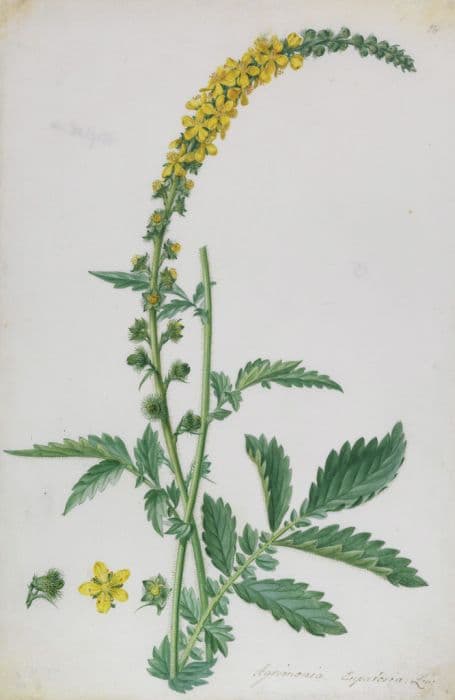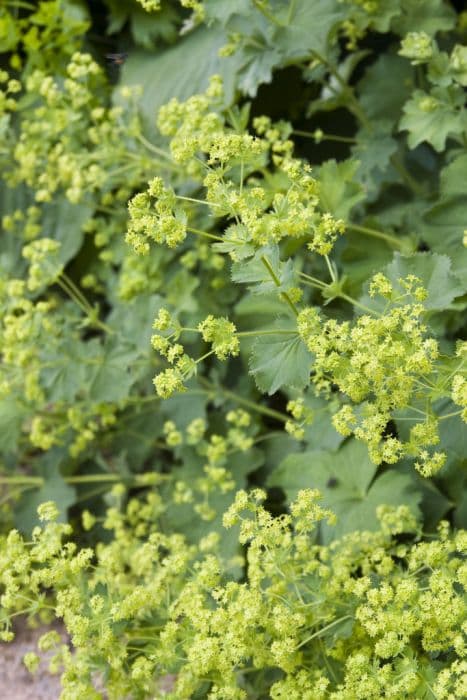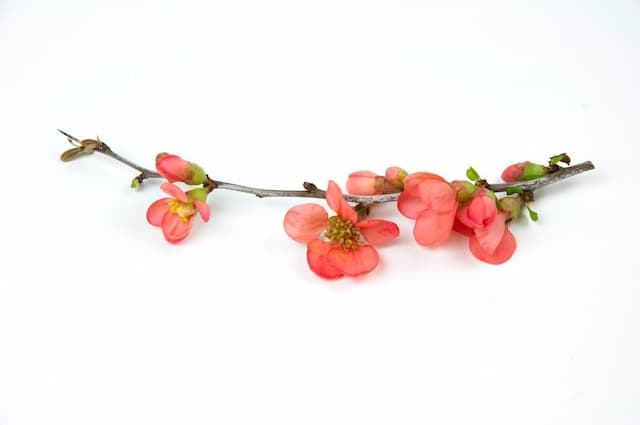Rambling Rector Rose Rosa 'Rambling Rector' (Ra)

ABOUT
Rosa 'Rambling Rector', more commonly known as the Rambling Rector rose, is a stunning, vigorous climbing plant renowned for its exceptional floral display. This rose variety is characterized by its profusion of small, creamy-white flowers that bloom in large, dense clusters. Each flower is composed of numerous petals that are arranged in a classic rosette shape, giving them an antique and romantic appearance. The heart of the blooms may show hints of light yellow, adding a gentle contrast to the creamy petals. The flowers exude a strong and pleasant fragrance, which often scents the air around the plant, attracting bees, butterflies, and other pollinators. After the flowering season, the Rambling Rector may produce small, ornamental, red-orange hips that can add another layer of visual interest to the plant. Foliage on the Rambling Rector is equally lush and attractive, with leaves that are typically bright green and glossy. The foliage provides a striking background to the white blooms, creating a beautiful green-and-white tapestry. The stems are long and flexible, which makes this climbing rose ideal for training over supports, arbors, or trellises, where it can spread out and exhibit its full flowering potential. The canes may be adorned with thorns, which are common among rose plants, providing not only a defense mechanism for the rose but also adding to its natural, rustic charm. With proper care and the right conditions, the Rambling Rector rose will put on a magnificent show of flowers once a year, creating a breathtaking spectacle that is sure to be a highlight in any garden where it grows.
About this plant
 Names
NamesFamily
Rosaceae
Synonyms
Rambling Rector Rose
Common names
Rosa 'Rambling Rector'
 Toxicity
ToxicityTo humans
Rambling roses, in general, are not considered toxic to humans. There is no evidence to suggest that Rosa 'Rambling Rector', a variety of rambling rose, contains any toxic compounds that would cause poisoning if ingested. However, as with many plants, the thorns of rambling roses could cause physical injury such as scratches or puncture wounds, and in rare cases, these injuries could potentially become infected if not properly cared for.
To pets
The Rambling Rose is not known to be toxic to pets. Animals, especially cats and dogs, might experience mild gastrointestinal upset if they consume the leaves or flowers, as they would with many non-toxic plants, but it does not contain known toxins that would cause serious poisoning. However, like with humans, the thorns can cause injury to pets if they try to eat the roses or chew on the stems, potentially leading to punctures or scratches.
 Characteristics
CharacteristicsLife cycle
Perennials
Foliage type
Deciduous
Color of leaves
Green
Flower color
White
Height
15 feet (4.57 meters)
Spread
10 feet (3.05 meters)
Plant type
Climber
Hardiness zones
6
Native area
Cultivar
Benefits
 General Benefits
General Benefits- Attracts Pollinators: Ra is known for attracting bees, butterflies, and other beneficial insects that aid in the pollination of gardens.
- Aesthetic Appeal: Its abundant, creamy-white blossoms and vigorous growth habit add beauty and rustic charm to any landscape.
- Scent: The plant emits a pleasant fragrance that can enhance the sensory experience in a garden or yard.
- Shade Provision: Its dense foliage and sprawling nature can provide dappled shade in sunny garden spots.
- Privacy Screen: When planted along boundaries, Ra can serve as a natural privacy screen, growing quickly to block out unwanted views.
- Erosion Control: The robust root system of Ra can help stabilize soil and control erosion on slopes and banks.
- Habitat for Wildlife: Ra can provide shelter and nesting sites for birds and other wildlife, contributing to biodiversity.
- Historical Significance: Ra, with its traditional appearance, offers historical and cultural value to heritage gardens and landscapes.
 Medical Properties
Medical PropertiesThis plant is not used for medical purposes.
 Air-purifying Qualities
Air-purifying QualitiesThis plant is not specifically known for air purifying qualities.
 Other Uses
Other Uses- Crafting Natural Dyes: The petals of the Ra can be used to create natural dyes for fabric, yielding subtle shades of pink and red depending on the mordant used.
- Garden Structures: Ra's long canes can be trained over arches or pergolas, creating living garden structures that offer shade and visual interest.
- Perfumery: The fragrant flowers may be used in homemade potpourris or sachets to naturally scent linens and drawers.
- Educational Tool: Ra can serve as a hands-on educational tool for botany students learning about plant growth habits and reproductive systems.
- Culinary Garnish: Edible Ra petals can be used to add color and a subtle floral flavor to salads or as decoration on desserts.
- Artistic Inspiration: The beauty of Ra blooms can inspire artists and serve as a subject for paintings, drawings, and photography.
- Fruit Pectin Source: The hips of Ra, which develop after flowering, contain pectin, which can be used in making jams and jellies.
- Eco-Friendly Confetti: Dried Ra petals can be used as a biodegradable confetti alternative for celebrations and events.
- Floral Waters: Distilling Ra petals can produce floral waters that can be used in DIY beauty recipes or as a refreshing face mist.
- Companion Planting: Ra can be used as a companion plant in gardens to attract pollinators and beneficial insects, supporting overall garden health.
Interesting Facts
 Feng Shui
Feng ShuiThe Rambling Rose is not used in Feng Shui practice.
 Zodiac Sign Compitability
Zodiac Sign CompitabilityThe Rambling Rose is not used in astrology practice.
 Plant Symbolism
Plant Symbolism- Love: As with many roses, the 'Rambling Rector' rose symbolizes love. The beauty and fragrance of roses have made them universal symbols of affection.
- Beauty: Roses are widely regarded as symbols of beauty due to their elegant and attractive blooms, and the 'Rambling Rector' is no exception.
- Mystery or Secrecy: Historically, roses have been associated with secrecy. The term 'sub rosa' (under the rose) indicates confidentiality, possibly stemming from the rose's connection to the Greek goddess Aphrodite (Roman: Venus), who gave a rose to her son Eros, the god of love, and he, in turn, used it to bribe Harpocrates, the god of silence, to keep silent about his mother's indiscretions, suggesting that roses were a symbol of secrecy.
- Spirituality: The name 'Rambling Rector' could suggest a spiritual or religious connection, possibly denoting the idea of guidance, purity, and a connection to the divine, as roses often appear in religious iconography.
- Passion: In addition to love, roses can convey deep passion and strong emotions. The 'Rambling Rector', with its vigorous growth and abundant flowers, could be seen to symbolize a full-hearted and unrestrained passion.
 Water
WaterThe Rambling Rector rose should be watered deeply once weekly, providing about 1 to 1.5 gallons of water each time. During hot and dry spells, water twice a week. Ensure that the water goes deep into the soil to encourage the roots to grow downward. Avoid overhead watering to prevent leaf diseases; instead, use a soaker hose or water at the base of the plant. It is important not to overwater, as this can lead to root rot.
 Light
LightRambling Rector roses thrive best in full sun, which means they should receive at least six hours of direct sunlight daily. The perfect spot for planting is in an area where they can soak up the morning sun, which helps dry dew on the leaves and prevent fungal diseases. They can tolerate partial shade, but flowering may be reduced.
 Temperature
TemperatureRambling Rector roses are hardy and can survive temperature extremes. They can withstand a minimum temperature of about (-20°F) during dormancy in winter. However, the ideal growing temperatures for these roses are between 60°F and 70°F. They thrive in these warm conditions that provide enough heat for growth without being overly stressful.
 Pruning
PruningPruning the Rambling Rector rose is essential to promote healthy growth and vibrant blooms. Prune in late winter or early spring, removing dead or diseased wood and any weak or crossing branches to maintain good air circulation. It's recommended to prune these roses after they've finished flowering since they bloom on the previous year's growth. Moderate to heavy pruning every few years will rejuvenate the plant.
 Cleaning
CleaningNot needed
 Soil
SoilThe Rambling Rose prefers well-drained loamy soil enriched with organic matter. A pH between 6.0 and 7.0 is ideal. Amend soil with compost before planting for best results.
 Repotting
RepottingRambling Roses are typically not repotted as they are outdoor climbers; they should be planted in the garden where they can grow undisturbed.
 Humidity & Misting
Humidity & MistingRambling Roses are adaptable but prefer average humidity levels; they do not require specific humidity adjustments in the garden.
 Suitable locations
Suitable locationsIndoor
Not suitable for indoor growth; requires outdoor space to climb.
Outdoor
Plant in full sun, amend soil with organic matter, water regularly.
Hardiness zone
4-9 USDA
 Life cycle
Life cycle'Rambling Rector', a variety of rambling rose, begins its life cycle when a seed germinates in favorable conditions, typically in spring or after a period of stratification to break dormancy. The seedling then develops into a young plant with a strong root system and shoots that grow and climb using supports. As the rose matures, it enters a vegetative state where it continues to grow leaves, stems, and thorns. By the second or third year, the 'Rambling Rector' starts flowering, usually in early summer, producing clusters of small, fragrant, creamy-white flowers that attract pollinators. After blooming, it forms rose hips, which are seed-filled fruits that can propagate the plant if they fall to the ground or are carried away by animals. Finally, the rose enters a dormant phase in late autumn or winter, where growth slows down or stops until conditions become favorable again in spring, repeating its cycle.
 Propogation
PropogationPropogation time
Spring-Early Summer
Propogation: The most popular method of propagation for the Rosa 'Rambling Rector', commonly referred to as the rambling rose, is through hardwood cuttings. This is typically done during the plant’s dormant season, which is in late fall or winter. To propagate the rambling rose using hardwood cuttings, one would select healthy, mature stems from the current year's growth and cut them into lengths of about 6 to 8 inches (15 to 20 centimeters). The bottom cut should be made just below a node, as this is where the new roots will emerge. The cuttings are then planted in a moist soil mix, burying at least two-thirds of the cutting's length into the soil to ensure stability and to promote root growth. The soil should be kept moist but not saturated, and the cuttings should be placed in a location with indirect light while they develop roots. Success rates can be improved by dipping the cut end into a rooting hormone before planting.









